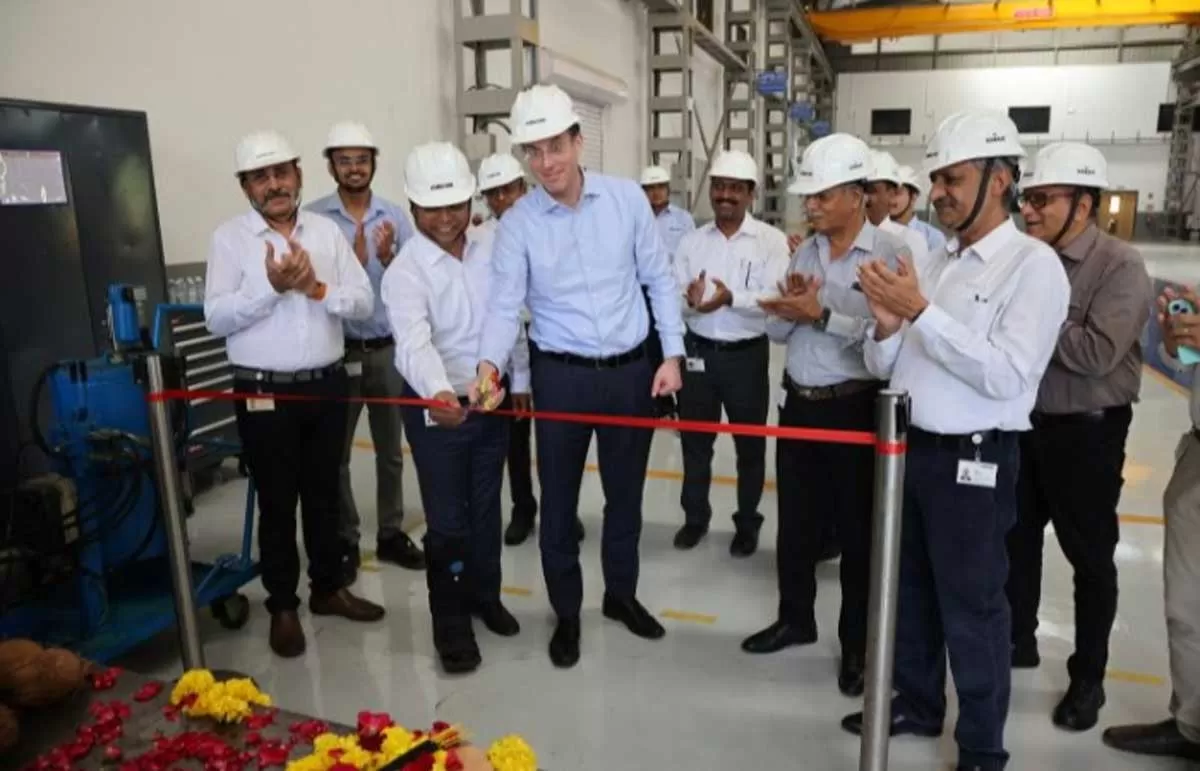The upcoming spike in infrastructure financing would be supported by the sharp improvement in the credit profile of infrastructure assets, contends CRISIL Ratings’ Somasekhar VemuriInfra funding to sustainThe sharp improvement in the credit profile of infrastructure assets will support financing to the sector.Capex in infrastructure space is expected to touch up to Rs.35 trillion in FY2025 & FY2026Nearly one-third of capex is to be funded through debt, a Rs.10-12 trillion debt requirement.Government-backed FIs will continue to provide momentum to infrastructure funding.The sector will be watching out for any developments in RBI’s draft project financing norms.The capital expenditure (capex) in the infrastructure sector is expected to be Rs.33-35 trillion cumulatively in fiscals 2025 and 2026 driven by the power, road, and railway sectors. The central and state governments are expected to fund three-fourths of this capex, with the balance expected to be met by the private sector. While the government’s capex spend would largely be through budgetary outlays, the dependence on debt by the private sector would be far higher. Overall, we expect Rs.10-12 trillion of debt funding requirement this fiscal and next, accounting for a third of the infrastructure capex, mainly led by the power and road sectors. The financial ecosystem is well placed to fund the debt requirement for the expected capex outlay. Financial institutions (FIs), predominantly government-backed, are expected to continue their funding momentum. Banks, having significantly improved their balance sheets, are in a position to step up the funding to the infrastructure sector. Capital markets and external commercial borrowings (ECBs) will continue to supplement the debt financing to the sector.Infrastructure financing would be supported by the sharp improvement in the credit profile of infrastructure assets – both in terms of probability of default and loss-given default (LGD). Policy measures such as better risk sharing in concession agreements, increasing share of central counterparties, and more stringent insolvency laws have aided the improvement in credit profiles. Further, innovative vehicles such as infrastructure investment trusts (InvITs) and restricted groups (RGs) providing diversification and structural benefits will continue to enhance the credit profile of infrastructure assets.Up to 35 trillion rise in infra capexCapex in infrastructure space is expected to touch `33-35 trillion cumulatively in FY2025 and FY2026, which is approximately 1.3 times the capex during FY2023 and FY2024. The higher capex outlay in the power and road sectors shall drive this growth. The surge will ride India’s need to create sustainable infrastructure by adding more green power to the energy mix and improving physical connectivity through a denser road network. Among the key infrastructure sectors, roads, and power – led by renewables – will likely account for half of the capex outlay during FY2025 and FY2026, with the balance towards railways, urban infrastructure, and others.Continued government focus on strengthening infrastructure across the nation through schemes such as National Infrastructure Pipeline (NIP), National Logistics Policy (NLP), and PM Gati Shakti will boost capex in the infrastructure sector. Government authorities and public sector undertakings (PSUs) – both central and state – are likely to do the heavy lifting, contributing to approximately three-fourths of the capex. Govt FIs to drive fundingCRISIL Ratings expects roughly one-third of the capex to be funded through debt, translating into Rs.10-12 trillion of debt requirement with the power and road sectors accounting for about three-fourths of the debt required. The debt exposure to infrastructure space increased at a compound annual growth rate (CAGR) of 7.5 per cent between FY2022 and FY2024 (Chart 2). Within the lending ecosystem, the government-backed FIs have done the heavy lifting in recent years, with their infra exposure growing at approximately 12 per cent CAGR between FY2022 and FY2024, contributing nearly 60 per cent of the incremental debt exposure. FIs will likely continue the funding momentum and contribute `5.5-6 trillion between FY2024 and FY2026, driven by the favourable borrowing cost enabling them to borrow and lend at competitive rates over longer tenures. To be sure, the weighted average cost of borrowings of five govt FIs, the Power Finance Corp. (PFC), REC, National Bank for Financing Infrastructure and Development (NaBFID), Indian Renewable Energy Development Agency (IREDA), and India Infrastructure Finance Co. Ltd (IIFCL) in the past decade have reduced by around 150-200 bps. This trend is expected to continue as benchmark G-sec yields are likely to soften supported by improving sovereign credit profile due to reducing fiscal deficit, and inclusion of government securities in the global bond index.In contrast, the infrastructure exposure of banks has grown at a tepid pace, contributing around 13 per cent of the incremental debt exposure in the last two fiscals, given their focus on cleaning up balance sheets. However, we believe banks are now positioned to step up infra funding, with their health indicators – capital, asset quality, and earnings profile – having improved in the past few years. Capital position is comfortable, with all public sector banks having a buffer of 100 bps over the regulatory norms, and almost all private banks having a buffer of over 300 bps. Overall gross NPAs have reduced from approximately 11.2 per cent in March 2018 to approximately 2.7 per cent in March 2024, and this trend is expected to continue and touch fresh decadal lows in the current fiscal. Also, the profitability of banks measured in terms of return on assets (ROA) is at a 20-year high touching nearly 1.3 per cent in FY2024. That said, banks have been risk-averse towards infrastructure lending because of past experience, and their willingness to increase exposure to the sector remains to be seen. The corporate bond market and ECBs will continue to supplement the debt financing ecosystem, with their infrastructure exposure expected to grow 9-11 per cent and 7-9 per cent, respectively, this fiscal and the next.That said, the infrastructure sector needs a higher contribution from the capital markets. This requires a policy pivot in the form of a bigger push to encourage patient capital investors to fund long gestation infrastructure projects. This can be in the form of relaxation in rating and exposure limits. For example, pension funds and insurance companies can only invest in ‘AA’ or above-rated infra-assets. While they can invest in instruments rated up to ‘A’, it is only provided if it is EL 1 (Expected Loss 1)-rated. For insurance companies, investment exposure to public limited infrastructure investee company is limited to a lower of 20 per cent of Special Purpose Vehicle (SPV) project cost or 10 per cent of the paid-up share capital, free reserves, and debentures or bonds of the investee company.Improvement in assets’ credit profilesInfrastructure funding would be supported by a structural improvement seen in the credit profile of infrastructure assets, driven by a host of policy facilitations. These include more equitable risk sharing between the concessioning authorities and private developers; the enhanced role of central counterparties leading to predictable payment cycles; and the emergence of infrastructure investment trusts (InvITs) aiding in leverage reduction and broad-basing ownership.The improvement in the credit profile is visible in both, the probability of default (PD) and LGD of infrastructure assets. The median rating of infrastructure assets in the CRISIL Ratings portfolio has improved from ‘BBB+’ in fiscal 2018 to ‘A+’ in fiscal 2024 (Chart 3). This trend is visible across all the key sectors. In the roads and renewables sectors, which form a major portion of rated infra issuers, the median rating for road assets improved from ‘BBB+’ to ‘A’ and for renewable assets from ‘BBB’ to ‘A+’ during the period.In the roads sector, for instance, evolved concession agreements in hybrid annual mode (HAM) projects, which reduced bottlenecks during the construction stage, and enhanced the credit profile of sponsors were among the key reasons for the improvement. In renewables, the increased presence of central counterparties, liquidity support to distribution companies leading to a rise in payment cycles, and the emergence of asset pooling structures led to improved credit profiles.This improvement in the credit profile of infra-assets is visible in the second pillar of credit risk, the LGD, as well. To gain insights into LGD for various infra segments, CRISIL Ratings conducted a study in 2023 on 80 infra defaults occurring in the past decade. And the findings were interesting. The LGD for infrastructure assets was found to be in the 20-60 per cent range (Chart 4), well below the typical LGD (60-80 per cent) factored in by lenders. Sectors such as renewables and transmission were on the lower end of the LGD spectrum, while thermal power assets were on the higher end. Toll and annuity roads rested in the middle.The key takeaway from the study is that the LGD for infra-assets has improved driven by the Insolvency and Bankruptcy Code (IBC) and pre-IBC platforms, and structural reforms in the sector. Pooling vehicles such as InvITs and RGs are enablers in enhancing the credit profile of the infrastructure debt as they provide multi-layer diversification (viz. asset class, geography, and counterparty). InvITs also have regulatory restrictions on financial leverage and limit investments in riskier under-construction projects. These features help elevate the credit profile to match the risk appetite of investors or lenders. Currently, there are 19 operational InvITs with assets under management (AUM) of Rs.4.9 trillion, with over Rs.2.5 trillion of debt raised. We therefore expect the infrastructure sector to be well-placed to attract the debt capital. The expected strength of the financial ecosystem and the structural improvements in the credit profiles of infrastructure assets will help.That said, the Reserve Bank of India’s draft project financing norms proposes a significant increase to the prudential floor for standard assets provisioning. The existing requirement of 0.4 per cent of the funded outstanding is proposed to be increased to 5 per cent for under-construction projects. The change in prudential floors without factoring in the credit profile of the infrastructure asset may increase the interest cost for infrastructure projects across the board. Actual implementation of these proposed norms would be a key monitorable.About the author:Somasekhar Vemuri is Senior Director of Regulatory Affairs and Operations & Chief Criteria Officer at CRISIL Ratings.

















